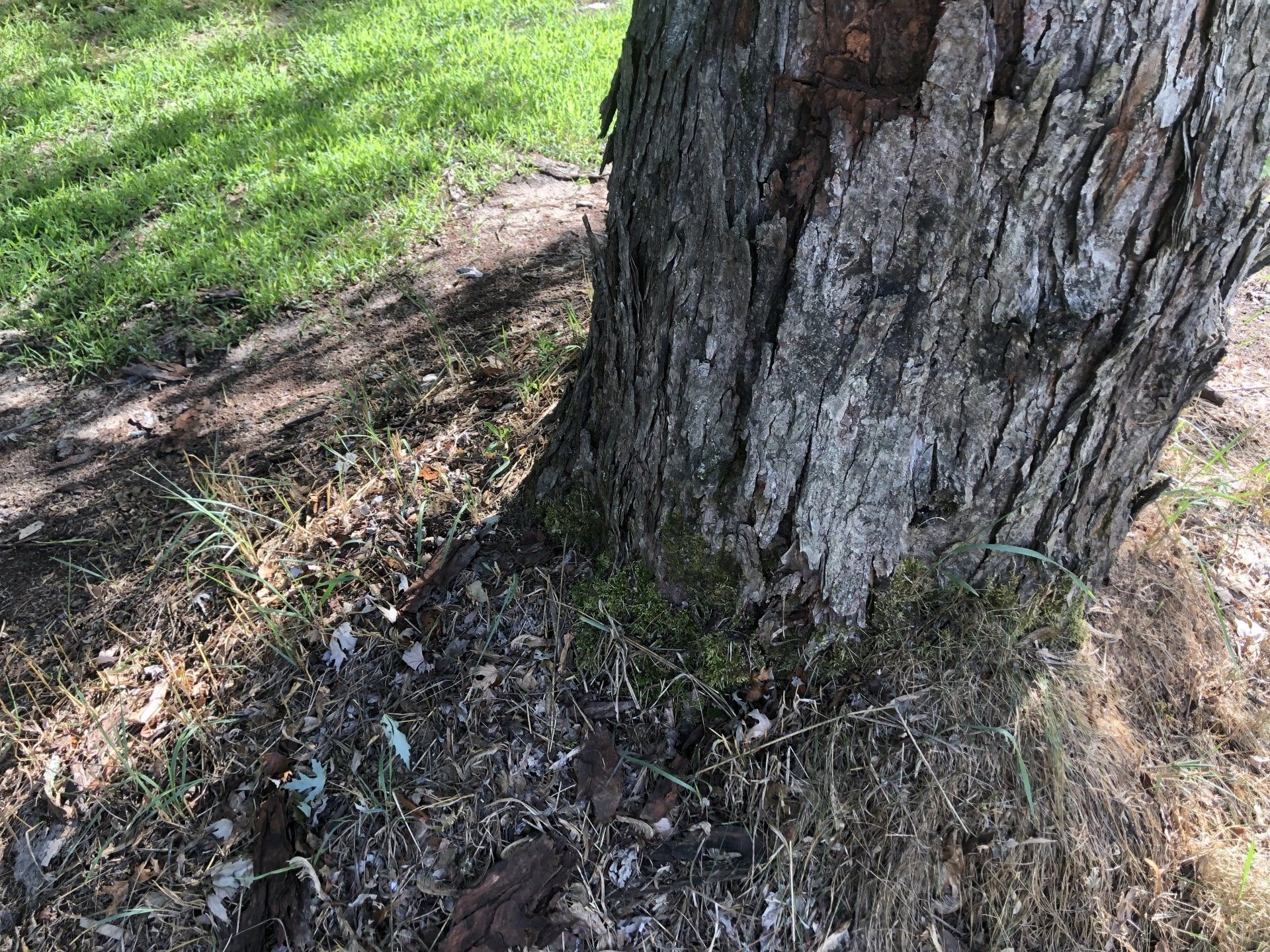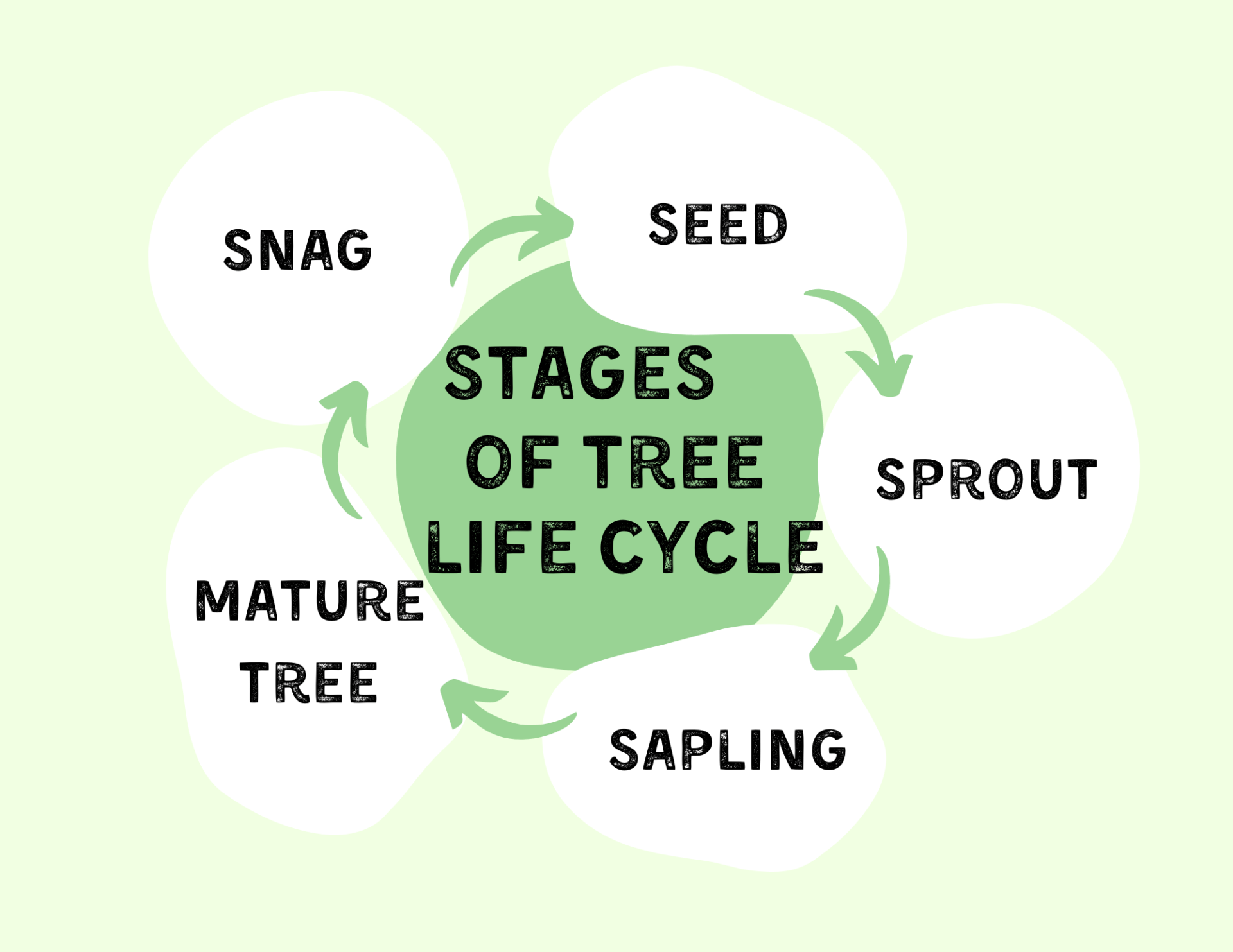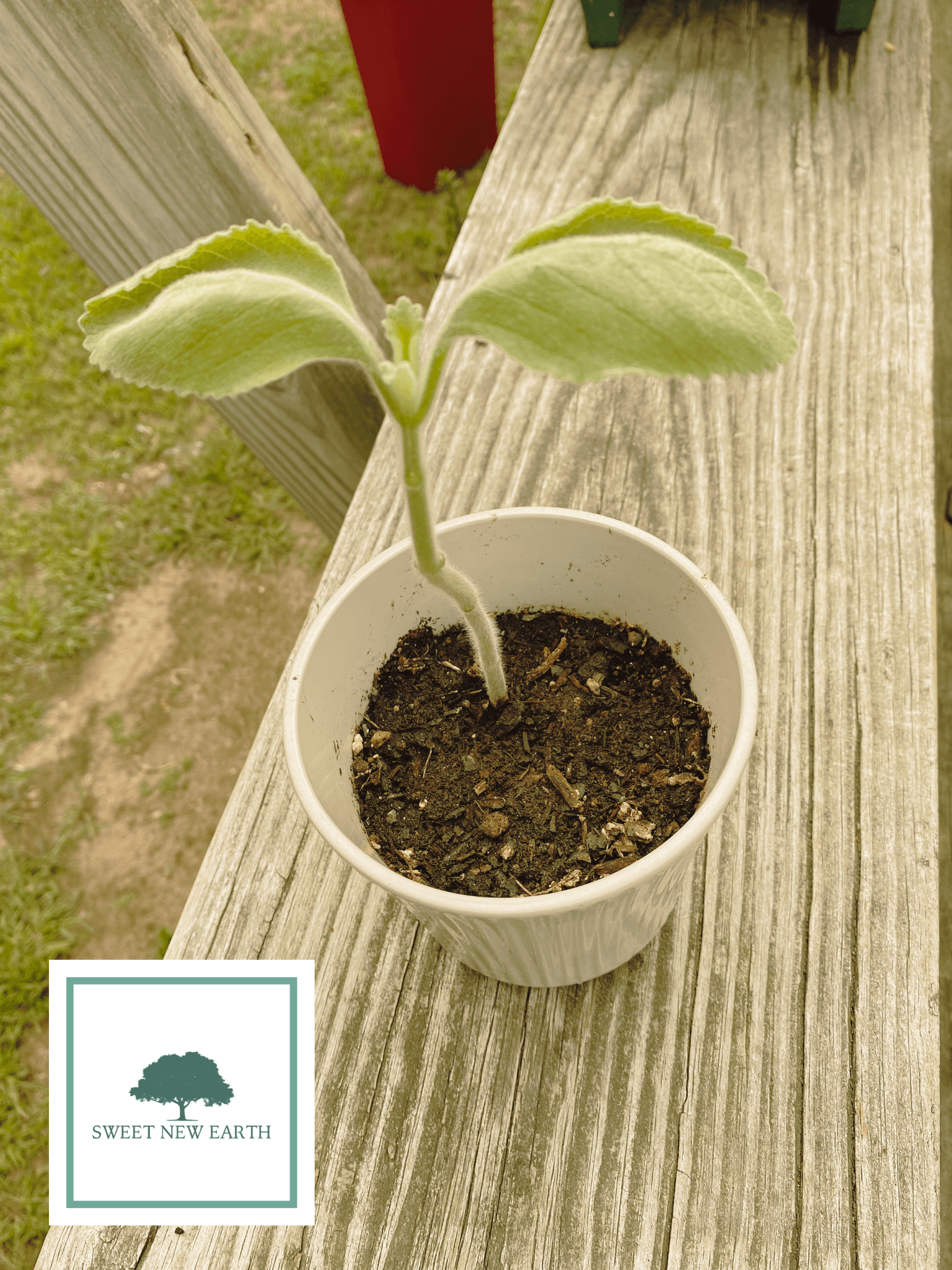Stages of a Tree's Growth

The stages of a tree life cycle are: seed, sprout, sapling, mature tree, snag and then seed again. Read below to get more in-depth information for each stage.
Table of Contents
What is the life cycle of a tree?

There are about 5 different stages to a tree's life.
- Seed
- Sprout
- Sapling
- Mature Trees
- Snag
The cycle begins with the seeds, which sprout and grow to sprouts, sprouts become saplings, saplings become adult trees, and adult trees that die are called snags.
New trees spawn from the conception seed of old trees. Tree growth will happen if conditions are favorable, perhaps it will go on to start producing fruits, and its growth comes to an end in a death snag.
It is a bit more intricate than this, but overall, this is roughly the life cycle of a new tree.
Depends on how you count, but we here at Sweet New Earth count 5 stages. We aren't biology majors, just tree lovers, so we don't like to overcomplicate it.
Let's keep it simple.
Once the seed has germinated, the tree will then spend its youth growing until it reaches adulthood and becomes an adult Once the tree is fully grown, it will begin to reproduce and create more seeds.
The final stage of a tree's life cycle is when it starts to die off and decompose back into the earth. From dust to dust.
Seed
Seeds are basically the egg's of trees. They come to being from the male and female parts of the trees producing fruit.
Whether it be wind or animals or us humans, seeds will travel to their location where, if the conditions are favorable, the seed will germinate in the earth. Humans have had a funny way of changing that process by deliberately taking and planting the seeds in ideal locations.
Sprout
With favorable conditions, the embryo within the seed is able to 'sprout' into life. The embryo is able to grow and break through the seed coating. Roots emerge from the seed and grow down into the soil to look for water and nutrients.
The sprout itself will grow upwards in search of sunlight, and the small foliage on the young tree will further develop to make the sprout food via photosynthesis.
Sapling
Saplings are young trees.
This is the adolescent or teenage years of the tree. The bark on it is still soft unlike its mature counterparts which have stronger, firmer bark.
Saplings aren't yet mature enough to develop fruits and therefore are unable to reproduce.
These are how most people buy their trees at a local nursery which they then plant in their yards. They go home, grab the right tools, and start digging a hole for their young tree.
Mature Tree
If the sapling is able to survive, it will enter maturity. It has officially become an adult tree and it will grow as much as its genetic limits and environment permit.
At this point, the tree will develop flowers and reproduce. Fruits will develop and seed dispersal will occur, repeating the cycle. If you have a fruit tree, you can expect to harvest it year by year. Regular pruning should be easier now that the tree has grown.
This stage of the tree life cycle is when the tree's are harvested for their fruits, lumber or other for other products/reasons. If the tree isn't harvested, it will eventually grow old and begin to decline.
Snag
Death is an inevitable part of life. Plenty of things can contribute to a tree's demise be it injury, drought, infestation or rot.
But a dying or dead tree also plays an important process in the stage of the tree's life.
Over time the standing dead tree, or snag, will break down returning nutrients to the earth. Insects or fungi will continue to break down the tree and eventually it will fall to the ground.
On the ground, the tree keeps decaying which will bring more and more nutrients to the soil that other plants, and perhaps, other trees, will use in their growth cycle restarting the entire process.
How Water And Nutrients Contribute To the Growth of a Tree
Water and nutrients are important for all stages of tree life cycle.
During the germination stage, water is needed for the seed to sprout. Once the tree has sprouted, water is needed for the tree to grow.
Trees need water to produce flowers and fruits. And finally, water is needed for the decomposition stage, when the tree suffers elderly decline and finally returns to the earth.
After the tree breaks down and returns nutrients to the soil, the tree seeds may once again begin to grow.
Dangers of the Tree Life Cycle
Insects, diseases, injuries and competition are part of the life of a tree cycle just like anything else in mother nature. As the tree grows, it can become infested with insects, or fungus can grow inside the tree.
Many trees suffer injuries during storms and all trees are part of the competition of life. To get to maturity, they'll need to survive harsh weather including summer and winter droughts.
Not all trees will survive but the ones that do will grow to be beautiful beacons of energy and hope for all those that seek refuge in their shade.
We plan on writing a more extensive article about this covering a wider variety of plant life rather than just trees so for now, this will have to do.
The life cycle of a tree is important because it helps to clean the air, stabilizes the soil, and provides homes for wildlife. Trees also provide us with oxygen, food, wood, and many other products that we use in our everyday lives.

Where can we buy trees at the different stages of life?
There are many places where you can buy trees. You can purchase them from a nursery, online, or at a garden center. You can also find trees in the wild, but be sure to get permission before you remove any from their natural habitat.
When purchasing a tree, it is important to consider the stage of life cycle that the tree is in. If you want a tree that will provide shade and fruit immediately, then you will need to purchase an older tree.
If you are looking for a long-term investment, then you may want to purchase a young tree that you can nurture and watch grow over the years.
Purchasing an older, more mature tree will require proper transplantation. If the tree is transported incorrectly, it can die so be careful.
No matter what stage of life cycle your tree is in, remember that they are all important parts of the environment and our lives. So, treat them with care and respect them for all they do for us! Last but not least, plant them in a great spot!
FAQs
If you enjoyed this article...
Be sure to check out our article on the tools you'll need to start planting your trees...
Join our community!
Join to receive guides, insights, and the latest gardening deals!
